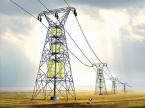While wind power systems and other alternative sources of electricity are becoming popular, and even common, in many parts of the world, Canada has been utilizing this form of electricity for years. Wind sourced energy has become a natural part of business and residential energy systems in Canada for quite a while. If you are considering moving to Canada soon, or even doing business with a Canadian company, you should really learn more about the way Canada uses wind energy.
Canada is a country brimming with natural resources and has been very progressive when it comes to seeking alternative energy sources to add to the more traditional coal and hydro power systems. Although wind energy still only accounts for 1% of Canada’s energy needs,
Because wind generated electricity is a great renewable resource and is also good for the environment, the Canadian Wind Energy Association has implemented a strategy to introduce more wind energy usage in the country. According to the Association, there should be 55,000 MW produced in Canada by the year 2025.
Wind power used to be the most popular in Ontario, but recently other cities, including Quebec and Alberta, are using wind turbines to generate small quantities of energy for their residential neighborhoods and businesses as well. By the end of the last century and beginning of this century, all the provinces had looked into using some form of wind power to supplement traditional forms of electricity and fuels.
Currently British Columbia is the only province that does not have a commercial wind farm, but the area’s electronic company has recently issued an Electricity Purchase Agreements for over 300 MW of wind-powered electricity, and other wind farms are being built across the country so that more citizens can experience the benefits.
Even so, the amount of electricity that is generated by wind turbines in Canada is still fairly small in comparison to other sources, like coal and hydro-power. There are about 85 wind farms in Canada at this time, and this represents almost 2300 MW of generating capacity. But this number is growing all the time.
The U. S. Cities of Chicago and Detroit, are now giving more consideration to using wind electricity due to all of the success and support it is getting throughout Canada. Because these cities are close to the Canadian border, and also have a large number of factories that could benefit from alternative sources of power in order to save money, and preserve the environment. There are also a number of hybrid projects in Canada as well. These can also help the surrounding areas to save in the use of fossil fuels and save a lot of money long term.
There are also ways that residents can get in on all of these initiatives and generate their own wind powered energy source in their own backyard. A small wind power turbine, standing about 30 feet tall and 2 feet wide, can generate 1.2KW of power. This works out to between 25 and 30% of an average domestic power usage, and costs about $5000. The Energy Ball will cost anything from $3,690 to $6,900, depending on the size you opt for. This runs completely silently and can provides anything up to 50% of the average domestic power requirements. There is a cheaper and more popular alternative intended for off-grid locations such as cabins or islands, that costs around $600 to $700 and supplies 200-watts. New designs are hitting the market all the time.
 Alternative Energy HQ solar power for homes, wind energy, and bio fuel issues
Alternative Energy HQ solar power for homes, wind energy, and bio fuel issues







